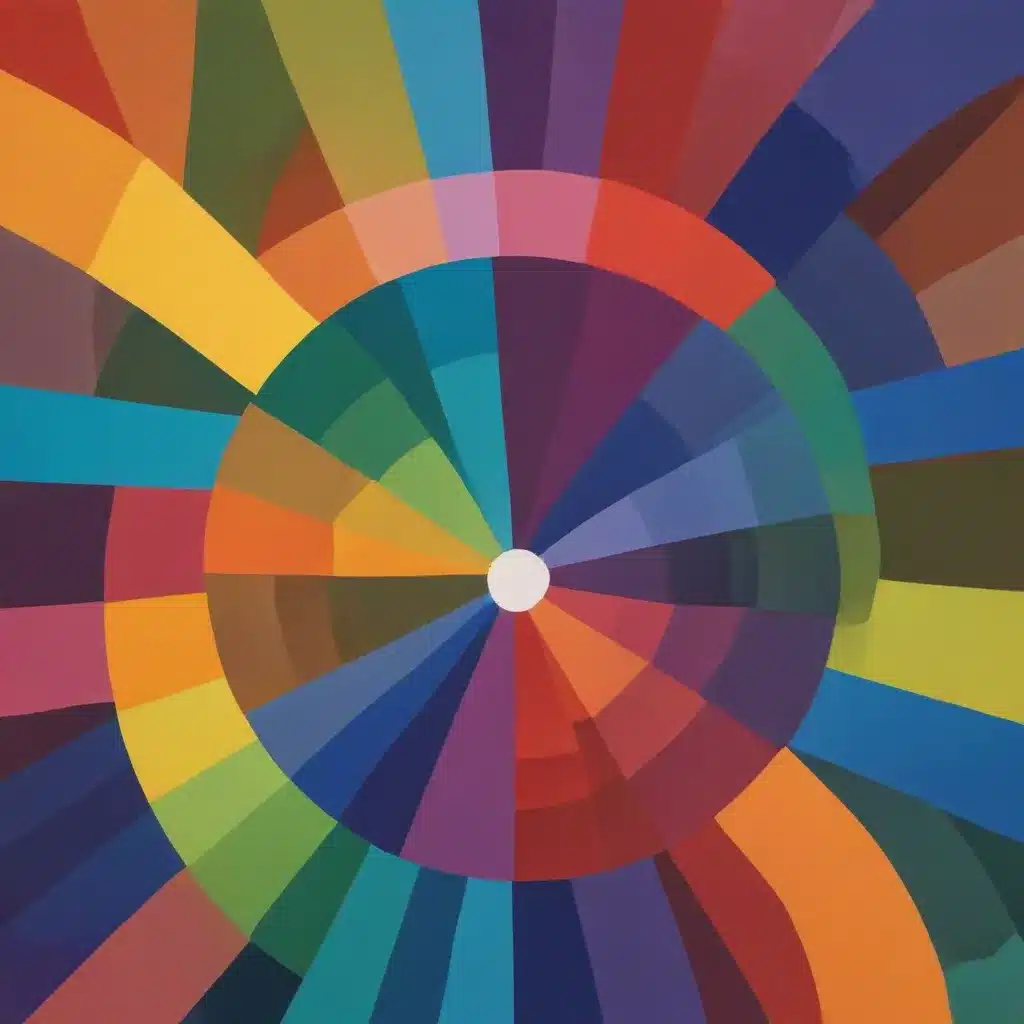The Power of Color Palettes
Ah, the color wheel – that iconic circular diagram that has captivated artists, designers, and everyday color enthusiasts for centuries. As a designer for A1 Landscape Construction in Temecula, California, I’ve come to appreciate the sheer magic of this deceptively simple tool.
You see, color is more than just a visual element – it’s a powerful language that can influence emotions, guide the eye, and make or break the entire aesthetic of a design. And when it comes to crafting stunning outdoor living spaces, color is the secret ingredient that can truly make a project sing.
Mastering the Color Wheel
Remember that classic elementary school art lesson where we first learned about primary, secondary, and tertiary colors? Well, the color wheel takes that foundational knowledge and elevates it to a whole new level. As InVision’s Luis Gonzalez explains, this circular representation of hues allows designers to explore harmonious color relationships and find the perfect palette for any project.
But the color wheel is more than just a visual tool – it’s a gateway to understanding the psychological impact of color. As Canva’s color wheel guide highlights, warm colors like red and orange evoke feelings of energy and passion, while cool tones like blue and green inspire a sense of calm and tranquility. Knowing how to wield these emotional associations is key to creating landscapes that truly resonate with clients and their guests.
Unleashing the Power of Complementary Colors
One of the most striking color combinations you can create using the color wheel is the complementary scheme. By pairing hues that sit directly opposite each other on the wheel, you can achieve a bold, high-contrast look that immediately grabs the viewer’s attention. Think the vibrant pop of red and green, the serene balance of blue and orange, or the playful contrast of yellow and purple.
As InVision’s Gonzalez explains, complementary colors are the perfect choice when you want to create a design that really makes a statement. Whether you’re looking to highlight a specific feature in the landscape or simply inject some visual excitement into the overall composition, this bold color pairing is sure to do the trick.
Embracing the Elegance of Monochrome
Of course, not every landscape design calls for high-octane color combinations. Sometimes, the most breathtaking results come from a more subtle, monochromatic approach. By sticking to a single hue and playing with its various tints, shades, and tones, you can craft a serene, harmonious palette that exudes a sense of sophistication and refinement.
Just think of the timeless elegance of an all-white garden, or the calming beauty of a landscape awash in shades of blue. As Figma’s color wheel guide explains, monochromatic schemes remove the decision-making complexity of using multiple contrasting colors, allowing designers to use color effectively in a understated yet powerful way.
The Color Wheel Unlocks Design Potential
Whether you’re drawn to the drama of complementary colors or the refined elegance of monochrome, the color wheel is the key to unlocking the full potential of your landscape design. By understanding the psychological impact of hues and mastering the art of color relationships, you can create outdoor living spaces that not only dazzle the eye but also capture the hearts and imaginations of your clients.
So the next time you’re staring at a blank canvas, remember to let the color wheel be your guide. With a little creativity and a whole lot of color theory know-how, you can transform even the most ordinary landscape into a vibrant, awe-inspiring work of art.




